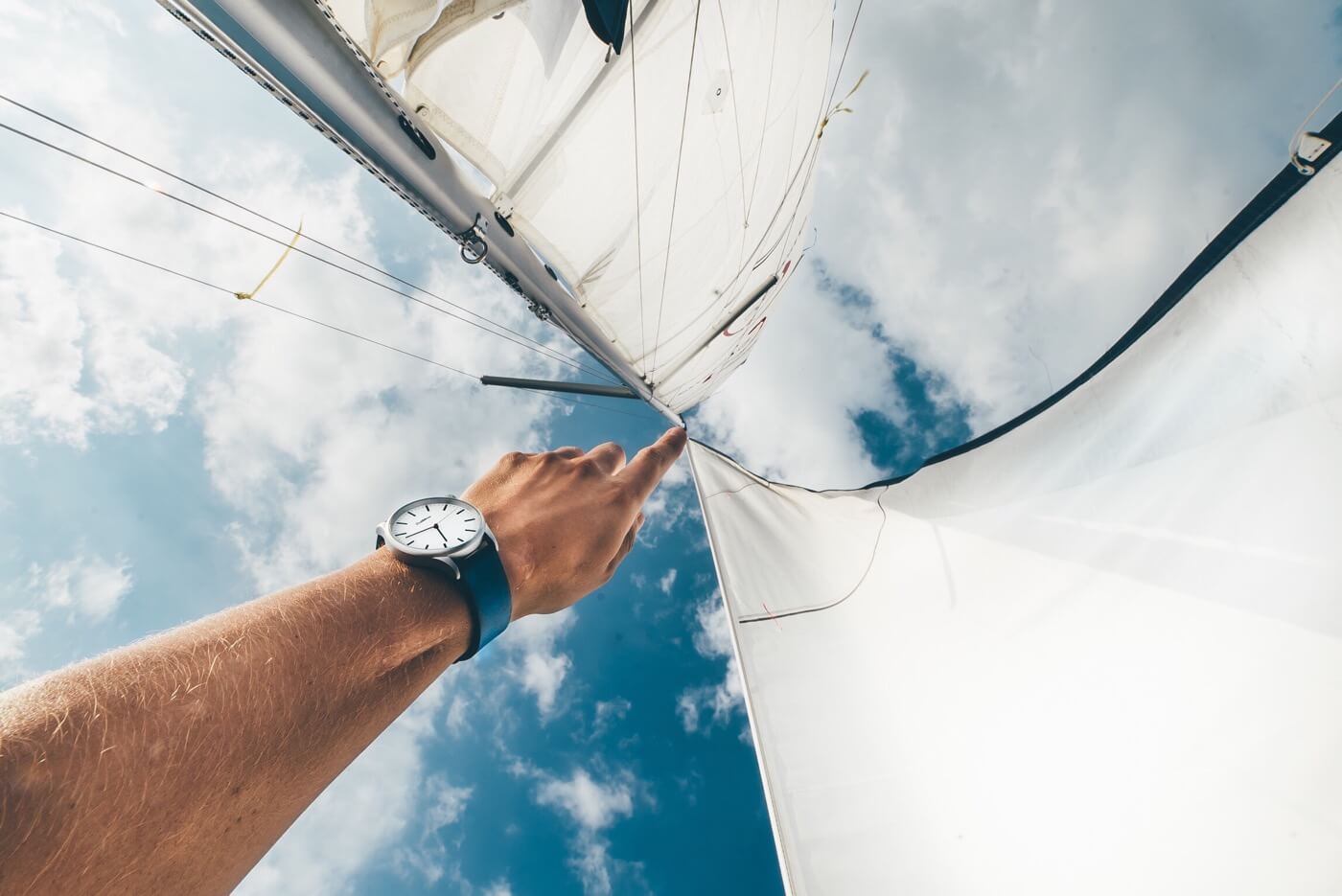


In really light air, a low-RPM motor-sailing option often fits the bill. A versatile, conventional cutter rig with a furling genoa and staysail, like this one aboard an Island Packet 460, remains a cruising preference. Well explore the trade-offs involved when choosing between masthead and fractional rigs when we look at sail options for these specific rig designs. In a building breeze, the fractionally rigged sloops mainsail-not the furling headsail-becomes the focus of any effort to dial-down sail area. However, in light air, their ability under sail hinges on a tall mast and a very big mainsail. The smaller, roller-reefed, non-overlapping headsails on a fractionally rigged sloop behave better in a wider wind range. Those that aremasthead-rigged rely on genoas (120 to 135 percent of the J measurement, which is the distance from the mast to the headstay), while fractional-rig sloops (with forestays that terminate below the masthead) favor a big main and small jib working sailplan. Most of the boats we step aboard after the boat shows are sloops or cutters, and the sails included are crosscut, medium-quality, woven Dacron. What We Testedīy intentionally postponing a look at the sail inventory for ocean-crossing, high-latitude venturing sailboats, this report zeroes in on what 95 percent of cruisers and daysailors need from their sails. A big rig and a high sail area-to-displacement ratio allow the working sails to keep this Ted Fontaine Friendship 40’s 15/16th headsail rig going in light air. Having sailed just about everything that floats-from windsurfers to tall ships-weve come to believe that the right sail inventory is a linchpin when it comes to having fun under sail. More often than not, the post boat-show test sails we do involve a two-sail (main/genoa) combo.

And this is just what we found to be true in our on-the-water sea trials. The bottom line is that no sailmaker will tell a customer that his 150-percent genoa can be incrementally reefed down to storm jib proportions with the sail working well at each stop along the way. The bundle of sailcloth that builds up around the headstay is another detriment to lift, but the versatility and convenience of a roller-reefable sail win out. Sail designers cope with this problem by designing roller-furling headsails with less draft, and in some cases, by adding foam padding that helps keep shape in the sail as it is reefed. Once you start rolling up a sail, the draft changes as the sail area changes. Unfortunately, efficient headsails are three-dimensional shapes, and sailmakers must carefully position draft to create lift. In the case of the shade, the material is flat and the diameter of the rolled up spool of cloth has little effect on the shades efficiency. This furling/reefing process is in some ways analogous to a window shade and its ability to regulate the amount of sunlight entering a room. In essence, this is a crews way of shifting gears, and roller furling has become the automatic transmission of choice. Regardless of whether you’re crossing oceans or crossing Long Island Sound, efficient sailing is all about changing sail area and trim in order to cope with variations in wind speed and wind direction. We’ll also look at who’s a candidate for a drifter/reacher or an asymmetric spinnaker, and why thats a measure of both crew mindset and vessel design. Our goal is to define which types of sailors will do just fine with a standard boat show sail inventory (a mainsail and a roller-furling jib or genoa),and to examine whether coastal cruisers need a second smaller headsail. In next months report, we will divide the fleet into categories based on how, what, and where boats are sailed and explore what sailmakers have to say regarding headsail material and what sail options they recommend for a 35-footer. The first part delves into what we’ve observed during our new-boat sea trials and vintage sailboat reviews. In this two-part look at headsail options, we focus on sails for coastal cruisers and daysailors. The big question is should the inshore sailor mimic the cutter-rigged ocean voyager, or is the inshore sailor a separate specie with a sailplan anatomy all his own?

And theres good reason that the circumnavigators sail inventory must be more durable, cover a wider wind range, and cost more than that of the coastal cruiser. There’s no question that sailors heading offshore face a different set of challenges than those cruising coastal waters.


 0 kommentar(er)
0 kommentar(er)
